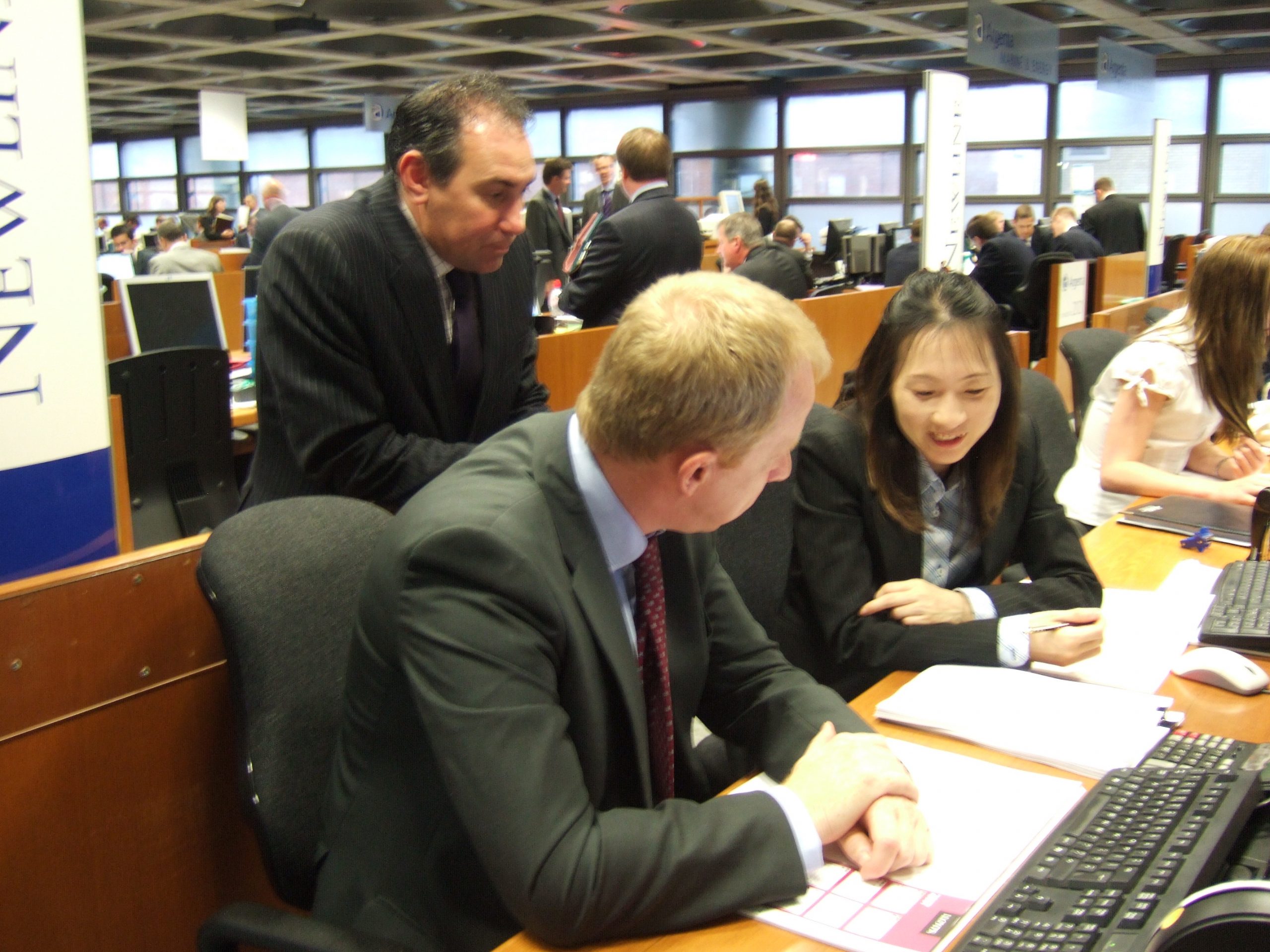設立・運営 2021.10.29
EM4 キャプティブの設立 No.4(保険金支払い)
当コラム内の文章・画像等の無断転載・引用・複製を固く禁じます。
For those who prefer to read this column in English, the Japanese text is followed by a British English translation, so please scroll down to the bottom of the Japanese text.
保険に入った場合、その対価として保険会社に支払うお金のことは一般的には「掛金」と呼ばれている。「日掛け」、「月掛け」などの言葉にあるとおり、「定期的に積み立てる、また支払うお金のこと」、また「掛け売り」等に表れているとおり、「一定の商品、サービス等を収受しながらその対価を支払うことに由来する言葉」である。「保険を購入する、保険に入る」ことを「保険を掛ける」ということもこのことに由来している。
保険会社に入社する人間の多くも同様、「保険会社へ支払うお金のことを『掛金』」と呼んでいるが、入社してまず徹底的にたたき込まれる言葉が「掛け金」ではなく「保険料」、そして「保険金」、さらにその違いである。
「保険料・保険金」と「保険」という言葉の後に「料」と「金」を付けて「お金の流れの方向」を差し示し、保険契約者及び保険会社が「容易にその言葉が持つ意味を把握できるように、間違いがないように」と考えられたものである。「保険料」とは保険契約者が保険会社に支払うお金のことであり、「保険金」とは事故が発生して保険会社がその補償(保障)のために保険契約者に支払うお金のことである。
このように保険の用語には特有の言い回しをするものが多い。この「補償」と「保障」も同様である。損害保険分野では、損害に対して保険金を支払うことを「損害のてん補」もしくは「損害の担保」と言うが、これを解りやすくした言葉が「補償」であり、これに対して生命保険分野では、保険金を支払うことは「保障」と呼んでいるので、同じ保険業界でもその用語には違いがあることに注意が必要である。
また、よく混同される損害保険分野の用語として挙げられるものに、金銭や物などに被った被害に関する「損害」と「損失」がある。一般的には物に関して使われる「損害」、また「彼の転職は当社にとっては大きな『損失』である」等、人に関して使われることもある「損失」、後者は金銭や物以外に人、エネルギー、力等様々な場面で使われ定義が曖昧である。
そのため、損害保険分野では「『損害』とは、事故などによって対象物が物理的影響を被ることをいい、『損失』とは、損害を被った結果、その対象と一定の関係のある人に与える影響のことをいう」(「損害保険募集人一般試験教育テキスト(基礎単位)」より)と定義されている。「キャプティブ・プログラム」と言ってもあくまでも「損害保険分野のビジネス・プログラム」であるので、「損害保険用語を正確に使うこと」に留意する必要がある。

1.キャプティブ・プログラムでの保険金支払い
キャプティブ・プログラムのフローを前号のコラムに記した「再保険を使う」ということを使って説明すると混同されがちなポイントが、「保険金支払い時期とその支払い義務・責任の所在」である。
「元受保険会社から再保険をキャプティブへ、そしてロンドンマーケットの再保険会社へ再々保険を」と説明すると、「事故が起きた時は、再々保険金がキャプティブに支払われ、そして再保険金が元受保険会社に支払われて、そのうえで当社に保険金が支払われるのですね?」という質問を受けることが多い。
しかし、キャプティブ・プログラムを介そうと介すまいと、キャプティブ・プログラムを構築した企業・団体が保険を購入する先は日本にある「元受保険会社」である。したがって、「保険金の支払い義務」は、当然その保険証券に約定されている内容のもと「元受保険会社が負う」のである。
最近、ある企業とキャプティブの構築に関してオンライン打ち合わせをした際、同社をご紹介いただいた方から「2年前にキャプティブの設立を検討したことがある」と伺っていたので、「『2年前にキャプティブの設立をご検討されたことがある』と伺いましたが、なぜその時に設立されなかったのですか?」と伺ったところ、担当役員の方から次のようなお答えを頂いて驚いたことがある。
「ご紹介いただいたキャプティブ・コンサルティング会社と話を進めて行ったのですが、当初伺っていた『キャプティブからの再保険料の金額』が、話が進んでいくとどんどん高くなっていき、『それでは普通の地震保険料と変わらないのであまり意味が無い』ということになっていきました。更には、『海外の再保険会社から再々保険金がキャプティブ経由、元受保険会社に入金した後に初めて保険金の支払いを受けることができる』と聞いて、『そんな当社が全く知らないような海外の再保険会社の支払い次第ということでは意味が無い』となってキャプティブの設立を断念したのです」と。耳を疑うような話であった。
グローバル・リンクがキャプティブ事業を開始するまで、有名大手企業を除いて、「キャプティブの設立」を検討、進めていた企業の多くは、「キャプティブ=リスクマネジメント」ではなく、「キャプティブ=貯金箱」と考える企業であったといわれている。「キャプティブのリスクマネジメント=キャプティブからの再保険手配」であるにも関わらず、「世界の再保険市場」を知悉した「キャプティブの設立を勧奨する本格的なプレーヤー(キャプティブ・コンサルティング会社)」が存在しなかったからである」と、以前、筆者が本コラムに記したが、そのことがいまだに続いているようである。
キャプティブのコンサルティング会社を選択する場合、「再保険も十分知悉している『本当のプロフェッショナル』か否かについて十分吟味されること」をお勧めしたい。そうでなくては、この実話のように「時間と労力の無駄」を経験することになる可能性が高いと考えるからである。
筆者は1999年から「年に6回のロンドン出張」を始めた。「なぜ年に6回も」とよく聞かれたが、その度に答えたのが「ロンドン・マーケットとの再保険を再保険ブローカー任せにしているか、それとも一歩踏み込んで、実際に保険を引受ける再保険会社のアンダーライター達と個人的な関係にまで関係を深化させているか、このいずれかによって、万が一の場合、特に保険金の支払いの時に大きな差が出る可能性が高いからです」と答えたものである。
そのためには、筆者のみならず、経営コンサルティングを委嘱されていた財閥系生命保険会社から損保子会社に出向している職員を「本当のプロフェッショナル」へと「ロイズでのアンダーライター研修」のために毎年1回帯同した。下の写真は、その時アンダーライターになろうと「ロイズのアンダーライティング・ルーム」でアンダーライターからの研修を必死に受けている女性職員を写した一枚である。

The photo above shows a female staff member staff who seconded from a conglomerate life insurance company to a non-life insurance subsidiary, who was desperately trying to become an “underwriter”, receiving training from an underwriter in the Lloyd’s underwriting room.
2.損害保険のプロフェッショナルとは
「損害保険のプロフェッショナル」と世界で認められるには、必要な資質があると言われている。それを筆者はロンドンで学んだ。1999年財閥系生命保険会社の損害保険分野の経営コンサルタントとして、「年6回のロンドン出張」の初回、損保商品の開発のために、お世話になっていた大手総合商社傘下のロンドンの保険ブローカー(保険仲立人)とともに何人かのロイズのアンダーライター(保険引受の専門職)達と話をした時である。
一緒に行った、ロイズのなかで長年保険ブローカーをやっている、同社の英国人役員が筆者のことを紹介するときに「Mr.Hataniは長年AIGのニューヨーク本社からオーソリティ(引受権限)を授与されアンダーライターをやっていた」ということを会う人ごとに話しをしていたのである。
後で、「なぜ、私がアンダーライターをやっていたことや、オーソリティのことを含めてあそこまで詳しく話したのですか?」と聞くと、彼は「アンダーライターは、同じアンダーライターの言葉はよく聞くものだ、『リスクを引受けた人間となら新しいビジネスのリスクをシェアしてもいい』という気持ちになるのが普通だから。特に、ビジネスを持ってきた元アンダーライターが、『相当のオーソリティを授与されていた』となれば尚更だからね」とにこやかに話してくれたことを憶えている。「世界の保険ビジネスでは、どう人と会い、どうビジネスを進めていくべきか」を学んだ瞬間であった。
残念ながら日本の損害保険業界では「専門家は育ちにくい」と言われている。職責からは、「アンダーライター」であるべき損害保険会社の社員には「人事異動が付きもの」であり、「長年一つの分野に集中して知見を深くしていくこと」がなかなかできにくい土壌に日本の損害保険業界があるからである。
「アンダーライター」はスペシャリストである。「スペシャリストを養成するのではなく、人事異動を経験させて『ゼネラリスト』を養成すること」が、日本のこれまでの保険業界の土壌であった。これからは変わっていかなければ日本の損害保険業界は「ガラパゴス化する」のは必定である。一世を風靡したが、「本物のインターネット」が出てきたら市場から消えざるを得なくなった「iモード」のようになるのではないかと懸念している、少なくとも企業保険分野では。
欧米の損害保険会社では、「火災保険」に携わり、その分野で育った人は損害保険業界での勤務を終えるまで「火災保険分野」で仕事をするのが普通である。同じ会社で「出世のガラスの天井」にぶつかったら、たいていの場合他社に転職するが、その時も「重視されるのはその人の過去の経歴、実績」であり、その分野での転職となるのが普通だからである。

今回のまとめ
本来、リスクマネジメントの手段である「キャプティブ・プログラム」は、その揺籃期にタックスヘイブンのドミサイル(キャプティブの設立地)にキャプティブが多く設立された成り立ちから、「節税策の一つ」として考えられ、そう考える人達によって、適格な成長が阻害された時期があった。
しかし、2018年の税法改正によって、そういった行為を主導してきた日本のプレーヤー達の多くは市場から退場、「リスクマネジメントを本義と考えるキャプティブ」、グローバル・リンクが主唱する「ソリューション・キャプティブ®」の方向へ舵が切られた。しかし、このために「困ったことが起きている」と仄聞する。
「キャプティブのリスクマネジメント」のためには「再保険の手配」がどうしても必要である。これは誰が考えてもわかる話だが、これまでなぜか日本では等閑にされてきた。その事情は前述のとおりである。その結果、「再保険に携わったことが無いズブの素人」が再保険ブローカー頼みで再保険の手配をするようになったため、キャプティブからの再保険の手配に問題が発生、再保険契約をした後で契約を変更しなければならない事態が出てきて、「トラブルになっていること」が起きているようである。
「キャプティブを設立してリスクマネジメントをおこないたい」という真摯に考える企業は、本当の保険のプロフェッショナルであるキャプティブ・コンサルティング会社にその業務を委託されることをお勧めする、そうでなくては、前述のように「時間と労力の無駄」となるだけでなく、大きなトラブルを抱えることになるからである。
執筆・翻訳者:羽谷 信一郎
It is strictly forbidden to publish, copy, quote or distribute the contents of this column without permission.
English Translation
EM (Establishment・Management) 4 – Establishment of Captives No.4 (Claims Payment)
When you buy insurance, the money you pay to an insurance company it is commonly referred to as “Kake-kin”. “The term “Kake-kin(premium)” is derived from the term “daily-Kake”, “monthly-Kake”, and from the term “Kake-sale”, which refers to the act of paying for a certain product or service while receiving it. The term “Kake-ru (buying) of Hoken (insurance)” is also used to describe the act of buying or taking out “Hoken”(insurance).
Many people who join an insurance company do the same: they call the money they pay to the company “Kake-kin”, but the first words they are taught are “premiums”, not “Kake-kin”, and “claims to be paid”, as well as the difference between the two.
The words “Ryo (premiums/money)” and “Kin (money)” were added after the word ” Hoken (insurance)” to indicate “the direction of the flow of money” and to make it easier for policyholders and insurance companies to grasp the meaning of the words, so that there would be no mistakes. The term “Hoken-Ryo (insurance premium)” refers to the money paid by the policyholder to the insurance company, and the term “Hoken-Kin (insurance benefit)” refers to the money paid by the insurance company to the policyholder to compensate (Hosho”) (“Hosho”: guarantee) the policyholder in the event of an accident.
Many insurance terms are worded in this particular way. The same applies to “Hosho: compensation” and “Hosho: guarantee”. In the non-life insurance field, the term “Hosho: compensation” is used to describe the payment of insurance money to compensate for damage or to secure damage, while in the life insurance field, the term “Hosho: guarantee” is used to describe the payment of insurance money. It should be noted that there is a difference in terminology even within the same insurance industry.
Another often confused term in the non-life insurance sector is “Son-gai”(damage)” and “Son-shitsu (loss)”, which refer to damage to money or property. The term “Son-shitsu (loss)” is generally used in relation to property, but can also be used in relation to people, for example “his change of job is a great loss for us”.
For this reason, in the field of non-life insurance, “Son-gai”(damage)” is defined as “the physical impact of an accident or other event on an object, and “Son-shitsu (loss)” is defined as the impact on a person who has a certain relationship with the object as a result of the “Son-gai”(damage)” (from the textbook for the general examination for non-life insurance solicitors (basic unit)). It is important to note that the term “captive programme” refers to a “business programme in the field of non-life insurance” and therefore requires the correct use of non-life insurance terminology.
1. Payment of claims under a captive programme
When explaining the flow of a captive programme in terms of the “use of reinsurance” described in the previous issue, there is a tendency to confuse the timing of claim payments with the location of the obligation and responsibility for payment.
“When we explain that the primary insurer provides reinsurance to the captive, which in turn cedes the retrocession to the London Market reinsurer, we are often asked: “So when the accident happens, the retrocession is paid to the captive, the reinsurance is paid to the primary insurer and then the claim is paid to us?”
However, whether or not a captive program is involved, the company or organisation that establishes the captive program is purchasing insurance from a primary insurer in Japan, and the “obligation to pay claims” is, of course, “assumed by the primary insurer” under the terms of the policy.
We recently had an online meeting with a company about establishing a captive, and the person who introduced us to the company told us that they had considered setting up a captive two years ago.
I asked him, “We heard that you had considered setting up a captive two years ago, why didn’t you do it then?” I was surprised to receive the following answer from the company officer:
“We had been talking to the captive consulting company that introduced us, but the amount of the reinsurance (retrocession) premium from the captive that we were told at the beginning became higher and higher as the discussion progressed. In addition, we were told that we would only be able to receive payment once the reinsurance (retrocession) proceeds from the overseas reinsurance company had been paid to the primary insurer via the captive, and we decided not to set up a captive because it would not make sense to depend on payments from an overseas reinsurance company that we had no knowledge of. I couldn’t believe what we were hearing.
Prior to the launch of Global Link’s captive business, most companies, with the exception of some of the biggest names in the industry, were considering setting up a captive because they saw a captive as a piggy bank, not a risk management vehicle. “This is because there were no serious players (captive consulting firms) with knowledge of the global reinsurance market to recommend the establishment of a captive, even though captive risk management = reinsurance from a captive,” I wrote in this column. This still seems to be the case.
When selecting a captive consulting firm, I would recommend that you “carefully examine whether the firm is a true professional who is also well versed in reinsurance”. Otherwise, as in this case, you are likely to experience a “waste of time and effort”.
In 1999, I started to travel to London six times a year. “I have often been asked why I travel to London six times a year, and I have always replied: “Because it makes a big difference whether you leave the reinsurance with the London market to the reinsurance brokers, or whether you go one step further and develop personal relationships with the underwriters of the reinsurance companies who actually underwrite the policies. The reason for this is that it is likely to make a big difference, especially in the event of a claim”.
In order to achieve this, not only the author, but also staff seconded from a conglomerate life insurance company to a non-life insurance subsidiary, who had been commissioned to provide management consulting services, were taken along once a year for “underwriter training at Lloyd’s” to become “real professionals”.
2. What is a non-life insurance professional?
It is said that there are certain qualities required to be recognised as a “non-life insurance professional” in the world. In 1999, as a management consultant in the non-life insurance field of a conglomerate life insurance company, at the beginning of my “six times a year trip to London”, I met a number of Lloyd’s underwriters together with a London insurance broker under a large general trading firm that I had been working with to develop non-life insurance products.
I was introduced by a British officer of the broker who had been an insurance broker for many years, and he told everyone he met that “Mr.Hatani had been an underwriter for many years under the authority of AIG’s New York head office”.
Later, I asked him, “Why did you go into such detail about my underwriting, including the authority?” He replied, “Underwriters listen to their fellow underwriters a lot, because they are usually willing to share the risk of a new business with someone who has taken on the risk. Especially when the former underwriter who brought the business to us had been awarded a considerable amount of authority,” he remembers smiling. “This was the moment when I learnt how to meet people and conduct business in the global insurance business.
Unfortunately, in the Japanese non-life insurance industry, it is said that it is difficult to develop specialists. This is because employees of non-life insurance companies, who are supposed to be “underwriters” by virtue of their responsibilities, are always subject to personnel changes, making it difficult for them to concentrate on a single field for many years and deepen their knowledge.
The “underwriters” are specialists. The Japanese insurance industry has so far been based on the principle of “not training specialists, but training ‘generalists’ through personnel changes”. If this does not change, Japan’s non-life insurance industry will inevitably become “Galapagosised”. I fear it will be like i-mode, which took the world by storm but had to disappear from the market when the “real Internet” came out, at least in the commercial lines sector.
In Western property and casualty insurance companies, people who work in “fire insurance” and have grown up in that field usually work in the “fire insurance field” until they finish their career in the property and casualty insurance industry. When they hit the ” glass ceiling” in the same company, they “move to another company”, but even then, “the emphasis is on their past career and achievements”, and they usually move to that field.
Summary of this issue
There was a time when captive programs, which were originally a means of risk management, were considered to be a “tax saving measure” because of their origins in the cradle of captives, many of which were established in tax haven domiciles.
However, with the 2018 tax law changes, many of the players in Japan that led the charge have exited the market and moved towards “risk management driven captives”, or “solution captives” as Global Link recommends. However, we hear that this is causing problems.
In order to “manage captive risk”, “retrocession and reinsurance arrangements” are inevitably required. This is an obvious point, but for some reason it has been neglected in Japan. The reason for this is as mentioned above. As a result, “amateurs who have never been involved in reinsurance before” have been relying on reinsurance brokers to arrange reinsurance, which has led to problems in arranging reinsurance from captives and “troublesome situations” where reinsurance contracts have to be changed after they have been signed. It seems to be a “problem”.
“Serious companies wishing to set up a captive for risk management purposes” should outsource the task to a captive consulting firm, a true insurance professional, otherwise, as mentioned above, it would not only be a “waste of time”, but would also lead to major problems.
Author/translator: Shinichiro Hatani

